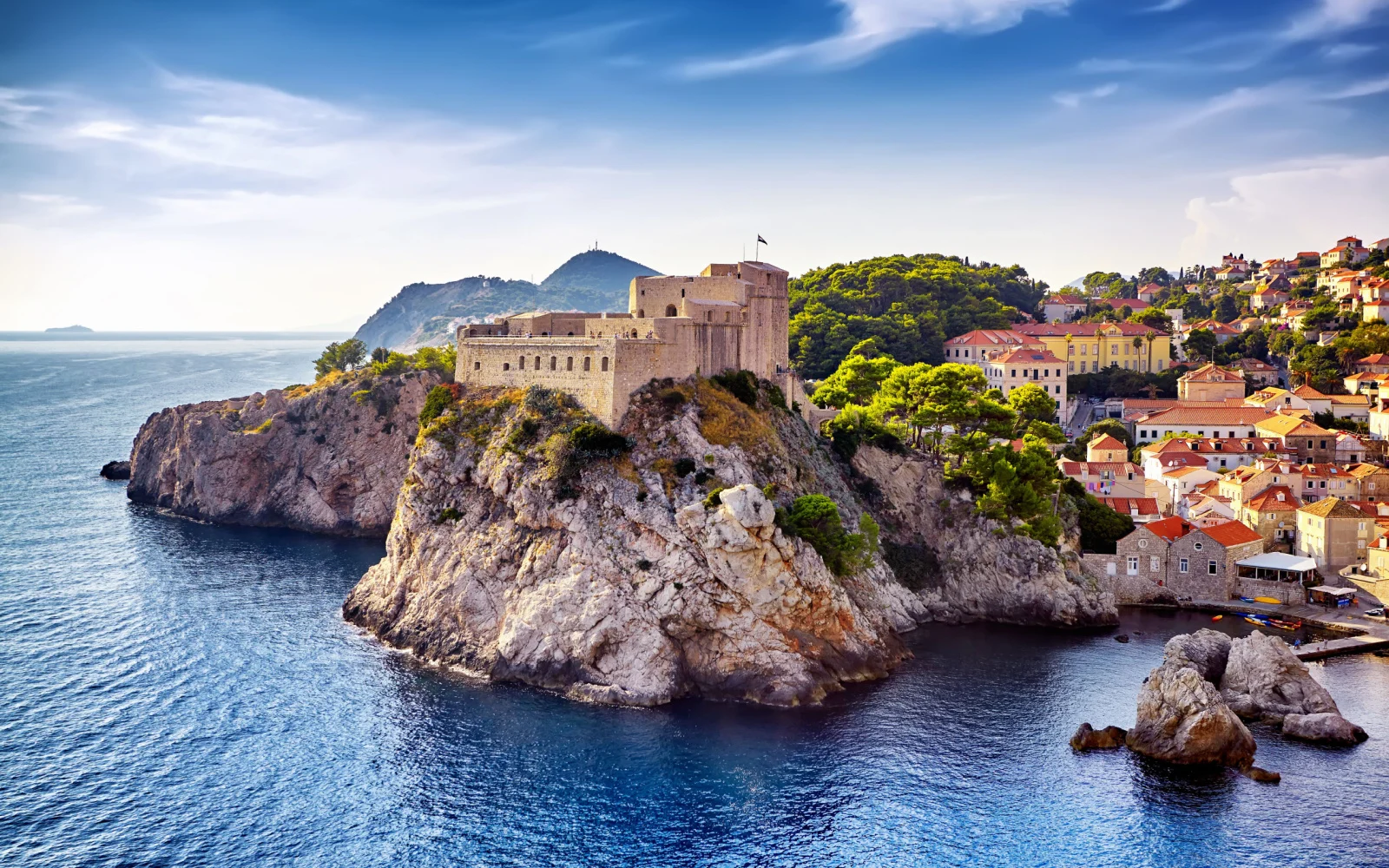What's the best time to visit Croatia?
The best time to visit Croatia is during the shoulder seasons from late April to mid-June and September to October, with June offering perfect weather and fewer crowds. This period allows for pleasant swimming conditions and less congestion at popular spots, avoiding the peak season’s overwhelming tourist influx in July and August.
Croatia is fast becoming one of the most popular destinations in the Mediterranean for visitors. Every year, millions of visitors flock to its beautiful coastline and other attractions.
One of the most popular destinations in Croatia is Dubrovnik, which attracts a lot of cruise ship passengers. The walled medieval city was one of the sets for the hit TV series Game of Thrones, and fans of the show may recognize the red roofs and thick walls of King’s Landing.
Even if you’ve never watched the show, you’ll enjoy walking the narrow streets and the path on top of the thick walls.
The thousands of islands, such as remote Mljet, offer secluded beaches and calm water. Gourmands should head to the northern coastal region of Istria, whose unique cuisine is heavily influenced by neighboring Italy.
But while there’s countless things to see and do in this country rich in history and culture, when is the best time to visit Croatia? Here’s our take.
The Overall Best Time to Visit Croatia
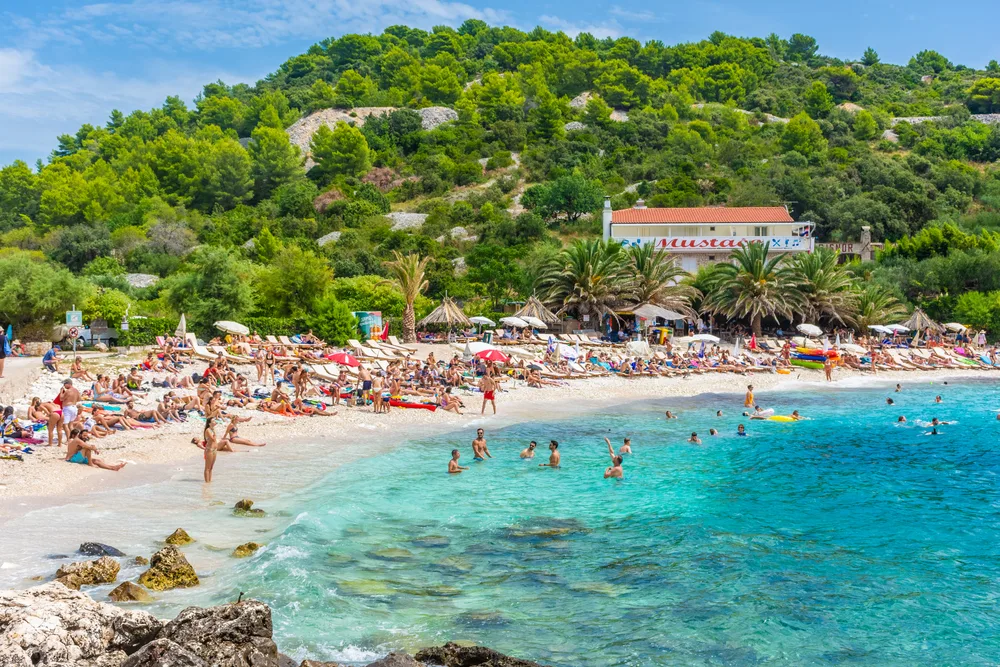
HVAR, CROATIA, AUGUST 8 2019: The beautiful Pokoniji Dol Beach in Hvar Island, Adriatic Sea/Stefano Zaccaria/Shutterstock
The best time to visit Croatia is during June, when the weather is nice and businesses return to their summer schedules, but crowds aren’t quite in full swing yet.
Any time during the shoulder seasons, which run from late April to mid-June for the spring shoulder season and September to October for the fall shoulder season, is a good time to visit.
That way, you get to benefit from beautiful weather that is still warm enough to swim, while avoiding the worst of summer’s crowds. Croatia is becoming a very popular tourist destination for a summer beach vacation.
Most visitors arrive during the peak tourist months of July and August, although visitor numbers start going up towards the end of June.
In July and August, Croatia receives over 4 million monthly overnight visitors — which is more than the country’s entire population! This statistic doesn’t include visitors that don’t stay overnight, such as cruise ship passengers visiting popular destinations such as Dubrovnik.
The crowds during the high season can get fairly unbearable, especially in popular tourist destinations such as Dubrovnik and Plitvice Lakes National Park.
Visitors report spending hours stuck in traffic or waiting in line to board a ferry, and crowds in narrow old towns being so thick that it is impossible to even walk. Coming during the shoulder season allows you to bypass this frustration.
Weather during the shoulder season is also warm enough to go swimming. In Split, one of the Croatian coast’s most popular cities, the average high temperature in June and September is a balmy 82 degrees Fahrenheit, and slightly lower in May and October.
As summers in Croatia are very hot and the coast is prone to forest fires, exploring is actually a lot more pleasant in the shoulder season than the high season.
The trick is to time your visit during shoulder season to try and make the most out of the season. The months closest to summer, June and September, see slightly more crowds, but also have the benefits of the summer.
A lot of things in Croatia, such as ferries to local islands, run on a seasonal schedule, and operating hours are longest in the summer. For some people, visiting during the summer is the best choice and worth some of the tradeoffs, such as the big crowds and sometimes unbearable heat.
If you are dependent on school vacations for scheduling your trips, obviously the summer is the best time to visit. Summer is also the time when the Croatian coast feels the most alive.
As mentioned above, getting around is easiest in the summer thanks to frequent ferry and bus departures, which tend to run on a seasonal schedule. Many businesses have the longest hours during the summer and shorten their hours or even close during the off-season.
If you are looking to let loose and enjoy some of Croatia’s party scene, then summer is definitely the best time to go. Most of the biggest events occur in the summer, such as:
- INMusic (Zagreb, June)
- Hideout Music Festival (Pag, June-July)
- Ultra Europe (Split, July)
- Defected Croatia (Tisno, August)
Cheapest Time to Visit Croatia
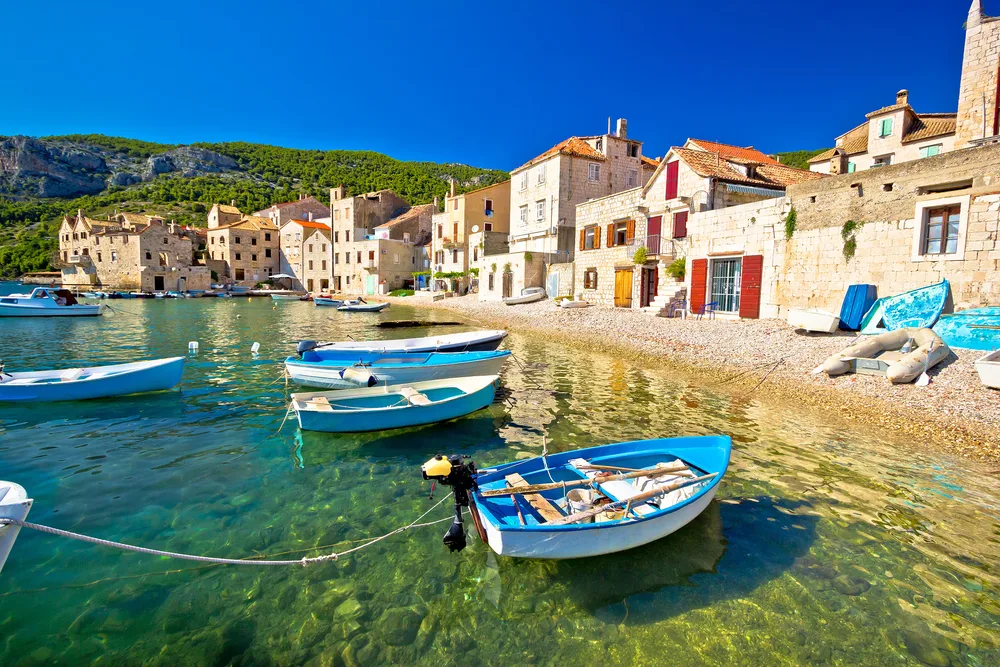
xbrchx/Shutterstock
The cheapest time to visit Croatia is during the winter (as long as you avoid Christmas), in November, January, February, and even March. However, visiting during the off-season comes with some tradeoffs.
One of the main drawbacks of visiting Croatia during its high season is the price of your trip. Croatia is becoming a very expensive destination, sometimes more expensive than more popular Mediterranean destinations such as Greece or Italy.
Many local bloggers and tourists have complained about prices that seem to increase every year. During the off-season, which is in the winter, prices tend to be much lower. Hotels tend to slash their prices in an effort to attract any tourists during the sleepy off-season.
While some accommodation options, such as camps, shut down for the season, others offer amazing deals in the winter.
During the off-season, there are also fewer visitors around, which removes the incentive for some of the creative price gouging that some Croatian café and restaurant owners tend to do in the summer.
The price of a coffee by the sea is often lower in the winter. However, prices are not the same throughout the entire winter. They tend to go up in December, which is the Christmas season. Zagreb, the capital, can get very expensive in December.
The city hosts its famous Zagreb Advent in the lead-up to Christmas, which draws thousands of visitors from across Europe, and hotel prices tend to rise accordingly.
Other cities in Croatia also host their own Advent celebrations, and although prices are more expensive than during other winter months, they are not nearly as expensive as they are during the high season.
Visiting Croatia during December allows you to glimpse some of its liveliness without compromising your budget too much.
Least Busy Time to Visit Croatia
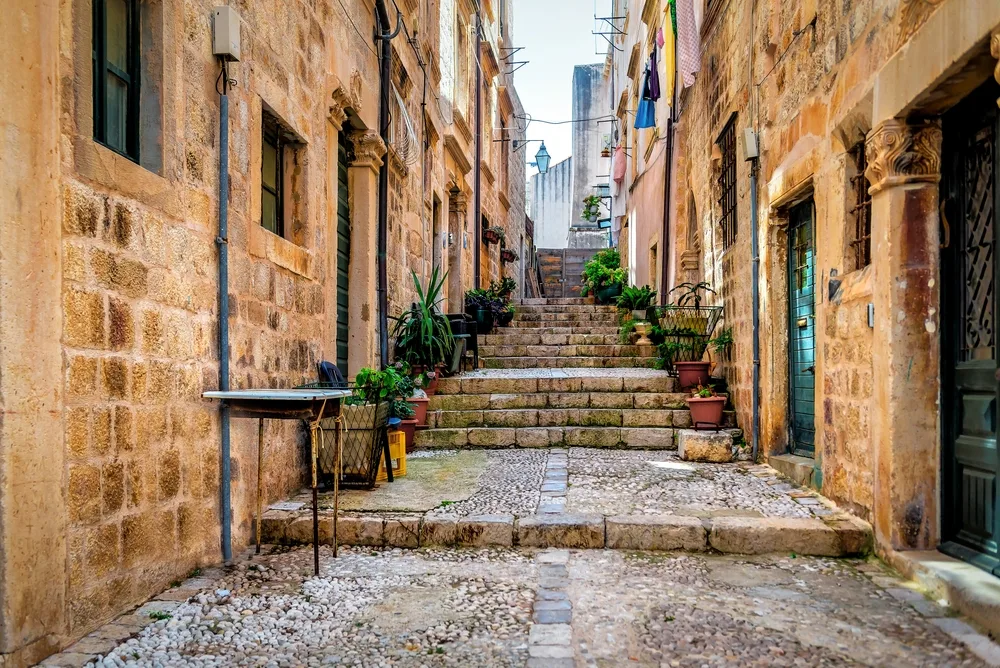
Vova Shevchuk/Shutterstock
The least busy time to visit Croatia is also the winter off-season, during November, January, or February. However, this may not always be a good thing.
It is true that summer in Croatia can get quite crowded. The crowds often make it difficult to enjoy all that Croatia has to offer since they pack the narrow streets of its most famous cities, making it impossible to walk or get a dinner reservation.
Significantly fewer tourists visit in the winter, and tourism numbers tend to dip. However, many places, particularly on Croatia’s coast, operate on a seasonal schedule. During the winter, many businesses shut down completely, and even bigger cities get the feeling of ghost towns.
Major infrastructure, such as ferries and even national parks, have seasonal schedules, making it difficult to see everything that you want to see. The weather is also a factor.
It’s a mistake to assume that Croatia has warm weather all year round. Although winters are warmer than in northern Europe, they can still be chilly and gray.
Continental Croatia has bitterly cold winters, while the coast suffers from the Bura, a strong wind that shuts down both land and sea traffic and makes it difficult to go outside. Swimming is out of the question!
If you plan your trip right, you can enjoy all that Croatia has to offer even during the winter. Stay in a bigger city such as Split, Rijeka (the alternative industrial city on the northern coast), or even Dubrovnik. They tend to be livelier, even during the off-season.
You’ll also get more of a chance to get to know what local life is like, since locals will have more time to chat instead of rushing around. Another option is to bundle up and explore Croatia’s interior.
The capital, Zagreb, the inland hills of Istria, and the castles and dramatic landscapes of the little-visited Zagorje region are all gorgeous winter destinations.
Worst Time to Visit Croatia
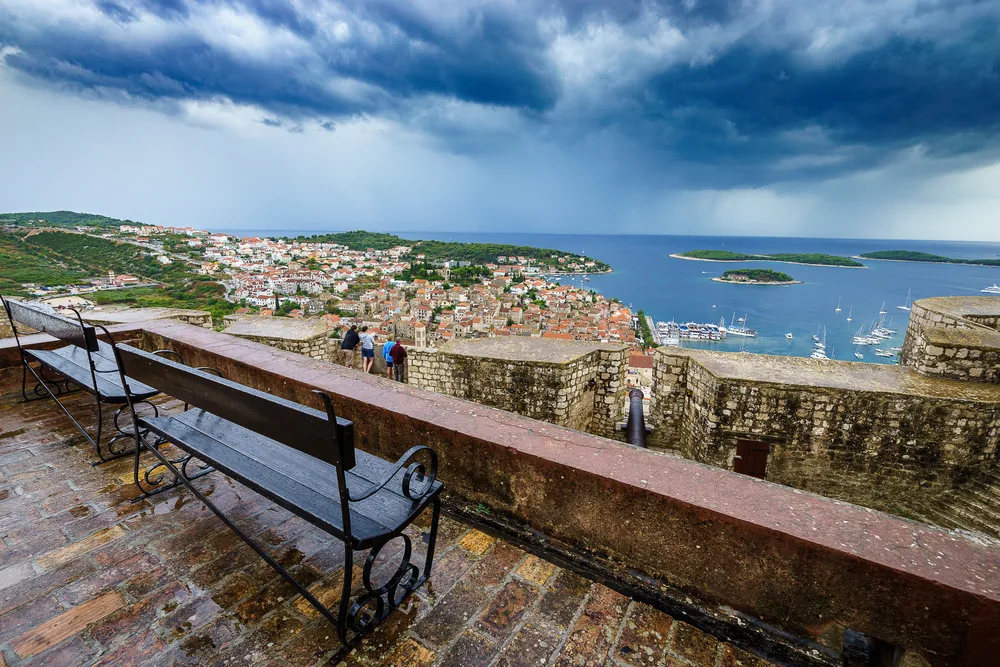
Aniczkania/Shutterstock
The worst time to visit Croatia is the winter, when swimming is impossible, and many coastal cities shut down for the season. However, if you hate crowds, then you’ll find that the worst time to visit Croatia is the summer.
The worst time to visit Croatia really depends on what you are looking for with your trip to the country. If you want a beach vacation where you’ll get to swim, then the winter is definitely the worst time to visit as it is too cold for swimming or any water-based activities.
However, for some people traveling during the summer is their worst nightmare due to the crowds. Plus, you shouldn’t underestimate the heat. The high temperatures mean that hiking or other strenuous activities are out of the question in July and August.
Croatia by Month: Climate & Activities
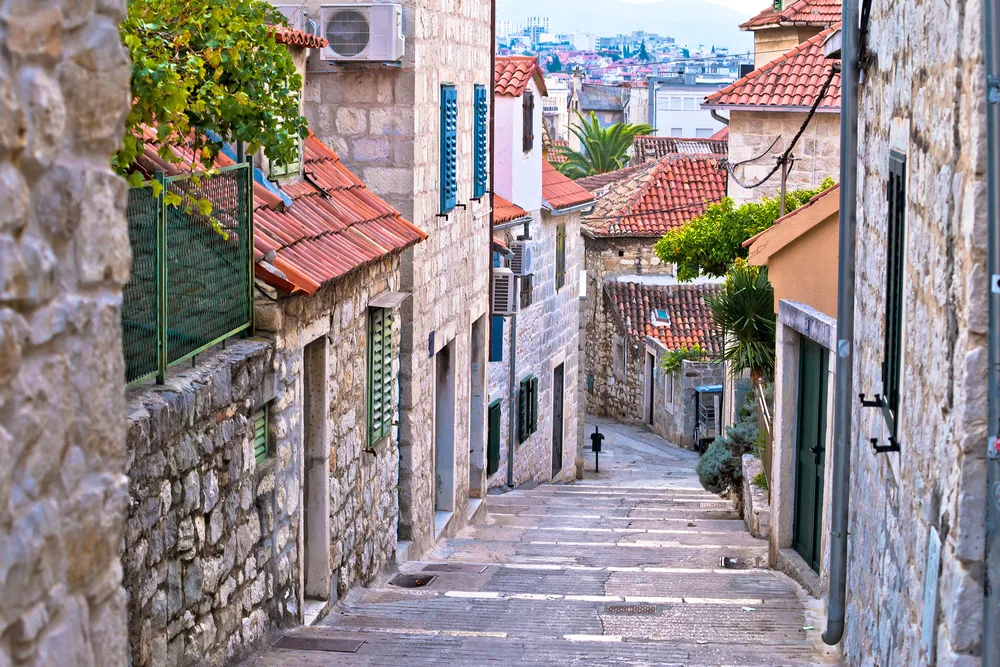
xbrchx/Shutterstock
Still unsure about the best time to visit Croatia? Take a look at our summary of the weather and climate by month below:
January
Winter temperatures in Croatia range from 0 to 10°C (32-50°F). It’s an ideal time for exploring historic sites in Dubrovnik, enjoying winter sports in Plitvice Lakes National Park, and experiencing cultural events in Zagreb.
February
Similar to January, February maintains cool temperatures between 0 to 11°C (32-52°F). Visitors can experience the Rijeka Carnival, explore the Diocletian’s Palace in Split, and enjoy winter activities in Gorski Kotar.
March
As spring begins, temperatures range from 3 to 15°C (37-59°F). March is perfect for hiking in Paklenica National Park, visiting the Plitvice Lakes with spring blooms, and enjoying the early days of outdoor cafes in coastal towns.
April
Spring temperatures in Croatia range from 8 to 18°C (46-64°F). It’s an ideal time for exploring the Istrian Peninsula, attending the Zagreb International Documentary Film Festival, and enjoying the Adriatic beaches as they come to life.
May
May sees temperatures ranging from 12 to 23°C (54-73°F). It’s a great month for sailing along the Dalmatian Coast, visiting the historic town of Trogir, and attending the International Children’s Festival in Šibenik.
June
Summer arrives with temperatures between 16 to 27°C (61-81°F). June offers opportunities for island hopping in the Kornati Archipelago, exploring the Plitvice Lakes with lush greenery, and attending music festivals like INmusic in Zagreb.
July
July maintains warm temperatures from 19 to 31°C (66-88°F). It’s a popular month for beach vacations on the Makarska Riviera, experiencing the vibrant nightlife in Hvar, and attending the Dubrovnik Summer Festival.
August
Temperatures in August range from 19 to 31°C (66-88°F). Despite the heat, it’s an excellent time for enjoying the beaches of Zlatni Rat in Bol, exploring the ancient city of Pula, and attending cultural events in Rovinj.
September
As fall begins, temperatures range from 15 to 26°C (59-79°F). September offers a pleasant transition, with opportunities for wine tasting in Istria, exploring the waterfalls in Krka National Park, and attending film festivals in Split.
October
October sees temperatures ranging from 10 to 19°C (50-66°F). It’s a great month for exploring the historical city of Zadar, hiking in the Biokovo Nature Park, and enjoying the fall colors in Plitvice Lakes National Park.
November
Fall temperatures range from 5 to 14°C (41-57°F). November is perfect for olive harvesting experiences in Istria, visiting the Museum of Broken Relationships in Zagreb, and enjoying the tranquility of coastal towns in the off-season.
December
Winter returns with temperatures ranging from 1 to 10°C (34-50°F). December brings opportunities for experiencing Christmas markets in Zagreb, exploring the Diocletian’s Palace adorned with festive lights, and enjoying winter activities in the snowy regions.
Frequently Asked Questions
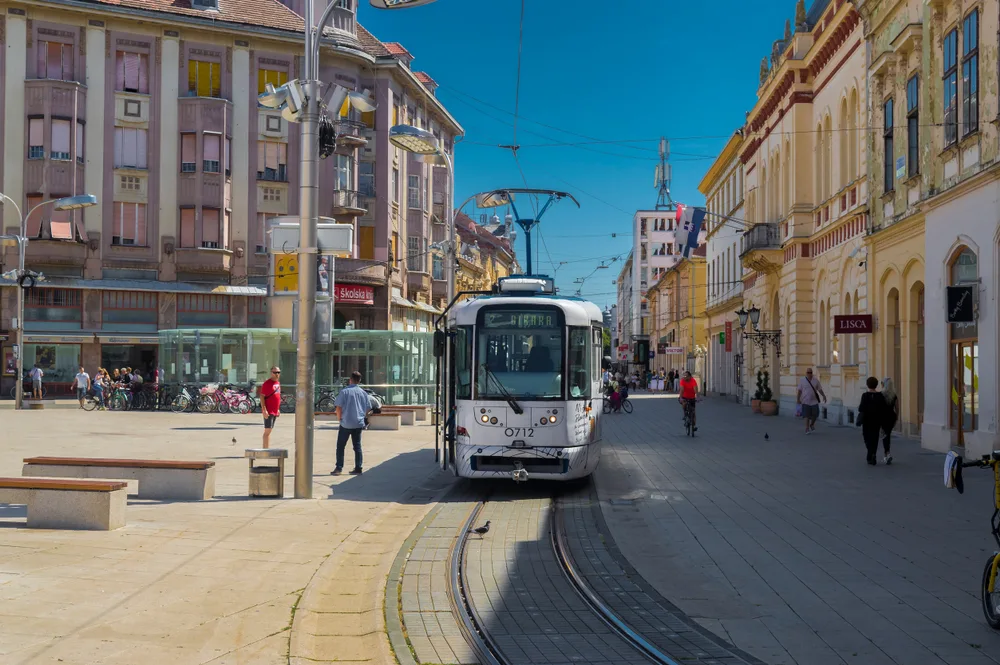
Osijek, Croatia- August 17, 2019.: Osijek main square, Slavonija region of Croatia/Zdravko T/Shutterstock
Here are some of the most common questions people have also asked about Croatia:
What is the best month to visit Croatia?
The best month to visit Croatia is June. The weather is gorgeous, and attractions are open, but the crowds are smaller than in July or August.
What is the least expensive month to visit Croatia?
The least expensive months to visit Croatia are November, January, February, and March. Fewer people visit during the country’s off-season.
Is there a rainy season in Croatia?
Croatia has a temperate climate with the standard four seasons, not a wet and dry season. The rainiest seasons are late fall and winter.
How many days in Croatia are enough?
Seven days are enough to lounge on the beach and explore some coastal locations. If you also want to spend time inland, you’ll want to reserve 10 days for your trip.
What months can you swim in Croatia?
You can swim in Croatia between May and October. Some years, the weather is warm enough to even swim in late April and early November!
So, What’s the Best Time to Visit Croatia?
The best time to visit Croatia is in May to June or September to October. That way, you get the best of the weather but for lower prices and with fewer crowds. Happy travels!



